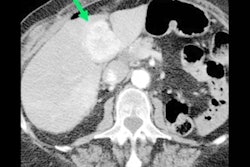
Imaging studies investigating breast cancer comprise about one-fifth of all imaging studies and are published at a high rate even though these cancers have less mortality impact on patients, according to Dutch research published on 8 March in Clinical Imaging.
Research led by Dr. Robert Kwee from Zuyderland Medical Center and Dr. Thomas Kwee from the University of Groningen, both in the Netherlands, also found higher proportions of imaging studies relative to incidence and mortality rate for liver and prostate cancer, among others.
Imbalances in cancers studied for medical imaging could mean these studies have lesser overall impact, they wrote.
The terms "cancer" and "imaging" used in online searches have shown increased popularity among cancer imaging studies over the past 20 years, a previous report says. This includes 9,774 citations in 2000, 20,413 citations in 2010, and 41,316 citations in 2021.
Incidence and mortality rates measure how burdensome some cancers are over others, and they could influence how countries prioritize research. In the new paper, the researchers wrote that identifying cancer types that stay underexposed in research when considering incidence and mortality could play an important role in how stakeholders reconsider research priorities. These include policymakers, funding bodies, patient organizations, scientists, and journals.
While previous studies suggest some cancers are overrepresented in research while others are underrepresented, there is a lack of such data for medical imaging research. This is what Kwee and Kwee wanted to find out, focusing on the proportion of published imaging studies relative to incidence and mortality rate per cancer type (publication-to-incidence and publication-to-mortality ratios).
They included 620 published studies that focused on 15 types of cancer.
| Top cancers in published medical imaging studies | |
| Female breast cancer | 20.2% |
| Prostate cancer | 13% |
| Liver cancer | 12.9% |
| Lung cancer | 8.8% |
| Central nervous system cancers | 8.1% |
Another category the team listed was "Other," which comprised all cancers that each account for less than 1% of all cancer types studied. These accounted for 8.6% of the total studies included.
Cancers in the central nervous system and liver had high publication-to-incidence ratios of 5.04 and 2.74, respectively. The lowest such ratios were found in nonmelanoma of the skin (0), leukemia (0), stomach cancer (0.10), and laryngeal cancer (0.07).
Cancers in the prostate and central nervous system had the highest publication-to-mortality ratios at 3.43 and 3.23, respectively. Other cancers with higher ratios included female breast cancer at 2.92 and kidney cancer at 2.13. The lowest of these ratios included esophageal cancer, stomach cancer, laryngeal cancer, and leukemia, ranging from zero to 0.16.
"Interestingly, the type of cancer investigated was not significantly associated with citation rate," the study authors wrote. "This suggests that cancers with high publication-to-incidence or publication-to-mortality ratios do not achieve a higher impact [in terms of citations per publication] compared to studies with lower publication-to-incidence or publication-to-mortality ratios."
The researchers wrote that the potential for multiple causes of imbalance between the publication rate versus incidence and mortality rates of some cancer types need to be further investigated.
"To our knowledge, there are no other recent studies related to this topic and in particular not in the field of cancer imaging," they added. "As such, the findings of our study may serve as a baseline and benchmark for future studies."



















